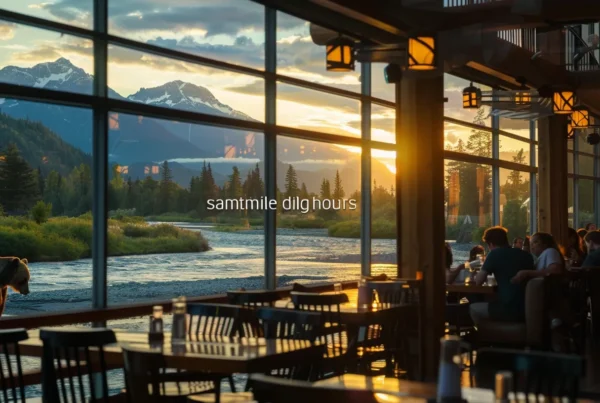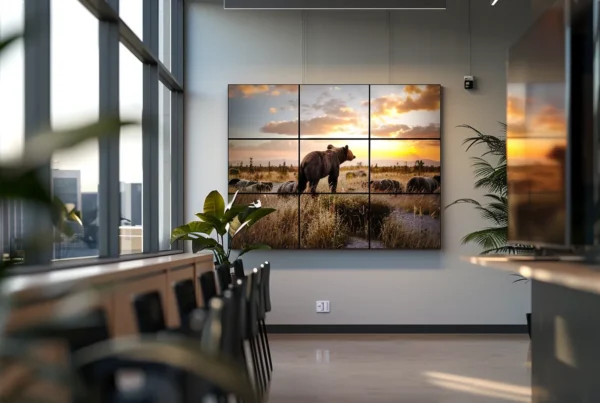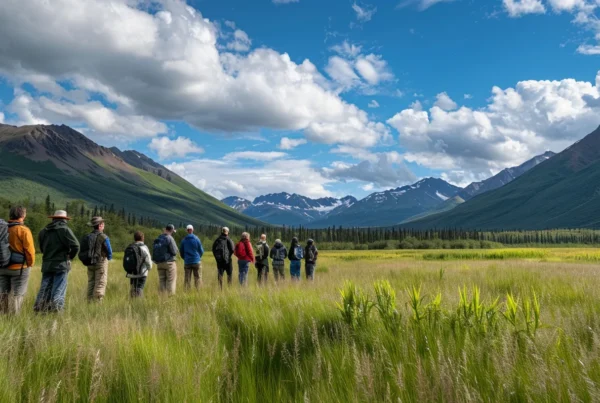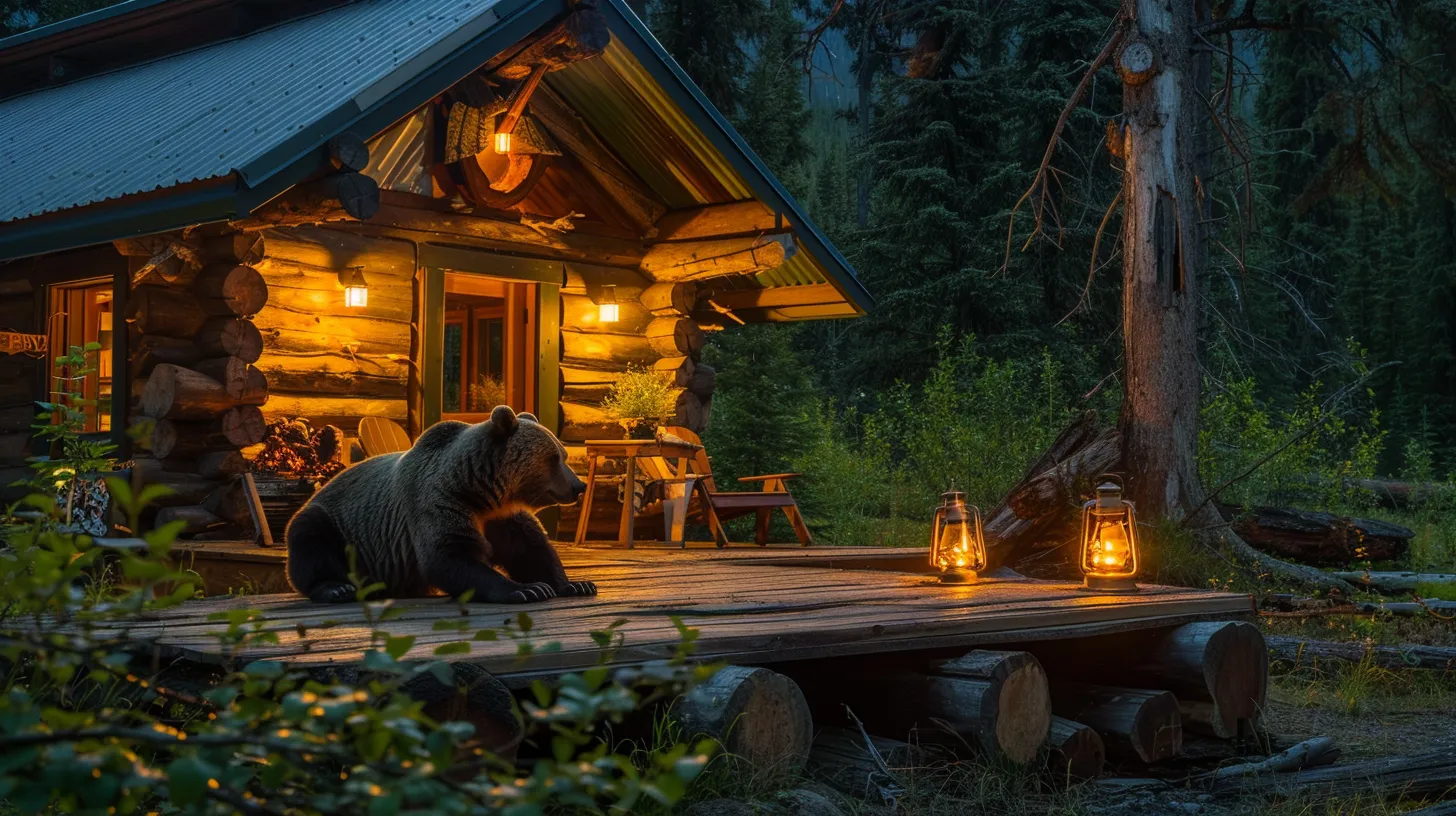
When Is the Best Time to See Bears in Alaska
When planning a trip to Alaska, many travelers want to know the best time to see bears. Understanding the optimal seasons is key to enhancing the viewing experience. This article will discuss the peak opportunities during summer, late-season viewing in fall, and the early signs of bears in spring. Readers will learn how to maximize their chances of seeing these magnificent animals while addressing common concerns about timing and location for bear viewing in Alaska. Engaging with this content will provide valuable insights into making the most of an unforgettable wildlife encounter.
Key Takeaways
- Bear viewing seasons in Alaska vary by species and location throughout the year
- Spring offers unique opportunities to observe polar bears emerging from dens
- Summer is ideal for watching brown bears fish during the salmon runs
- Fall showcases black bears foraging before winter hibernation
- Ethical viewing practices enhance wildlife experiences and ensure safety for both bears and visitors
When to See Bears in Alaska: Optimal Seasons for Viewing

Understanding the bear viewing seasons in Alaska and bear watching alaska is essential for optimal wildlife encounters. Key months for spotting different bear species, such as at Brooks Falls, vary by species. Numerous locations across the state offer excellent wildlife photography opportunities throughout the year. Factors influencing bear activity and visibility will also be highlighted, alongside tips for planning an unforgettable vacation dedicated to this remarkable wildlife experience.
Understanding the Bear Viewing Seasons in Alaska
Bear viewing in Alaska is segmented across various seasons, each offering unique opportunities for spotting different species. In spring, travelers often observe polar bears as they emerge from their dens, while summer months attract tourists to places like Katmai National Park and Preserve to witness brown bears fishing for salmon. Southeast Alaska also provides excellent vantage points to see black bears and bald eagles during feeding times along the coasts and rivers, making planning a trip around these key periods essential for an unforgettable wildlife experience:
Key Months for Spotting Different Bear Species
The optimal months for observing different bear species in Alaska depend on specific seasonal behaviors and locations. In the spring months, particularly April through May, visitors can witness polar bears emerging from dens along the coastline of the Arctic, while the summer months from June to August are perfect for observing brown bears fishing in streams and rivers, especially within Katmai National Park and the Tongass National Forest. September through October showcases black bears foraging for berries and preparing for winter, often viewable in the lush vegetation surrounding the Inside Passage, making these times ideal for wildlife enthusiasts looking to photograph and appreciate these magnificent animals:
- Spring: Witness polar bears emerging from dens.
- Summer: Observe brown bears at Katmai National Park fishing.
- Fall: Spot black bears foraging in Tongass National Forest.
Best Locations for Bear Viewing Throughout the Year
Alaska offers numerous prime locations for wildlife observation throughout the year, making it a top destination in North America for bear enthusiasts. Notable spots include Katmai National Park, where visitors can witness brown bears fishing in their natural environment from June to August. Additionally, Southeast Alaska caters to those on a cruise line, with several ports granting access to areas known for black bear sightings, particularly during the fall months when they forage for berries. Each of these locations provides unique opportunities for travelers to connect with Alaska’s majestic wildlife in their natural habitats.
Factors Influencing Bear Activity and Visibility
Various factors heavily influence bear activity and visibility in Alaska, shaping the experiences of wildlife enthusiasts. Geographic locations, such as Icy Strait Point and Admiralty Island, play a crucial role, as these areas provide rich habitats where bears forage. Seasonal changes in food availability, particularly around glaciers and fjords, also determine when and where bears gather, impacting viewing opportunities for visitors. Understanding these elements allows travelers to better plan their trips to witness these majestic creatures in their natural environments.
Tips for Planning Your Bear Viewing Trip
When planning a bear watching trip in Alaska, timing and location are critical. Travelers should consider visiting during the salmon run from June to August, as this period offers the best chance to see brown bears fishing along streams. Utilizing a floatplane to access remote areas, such as the Mendenhall Glacier region, can enhance the experience by providing a unique perspective on bear activity and habitat. Understanding when to see bears in Alaska and choosing the right locations will ensure a rewarding wildlife encounter.
As spring melts into summer, bears awaken with hunger. This is the time when the sights and sounds of these majestic creatures reach their peak, offering unforgettable viewing opportunities.
Summer Season: Peak Bear Viewing Opportunities
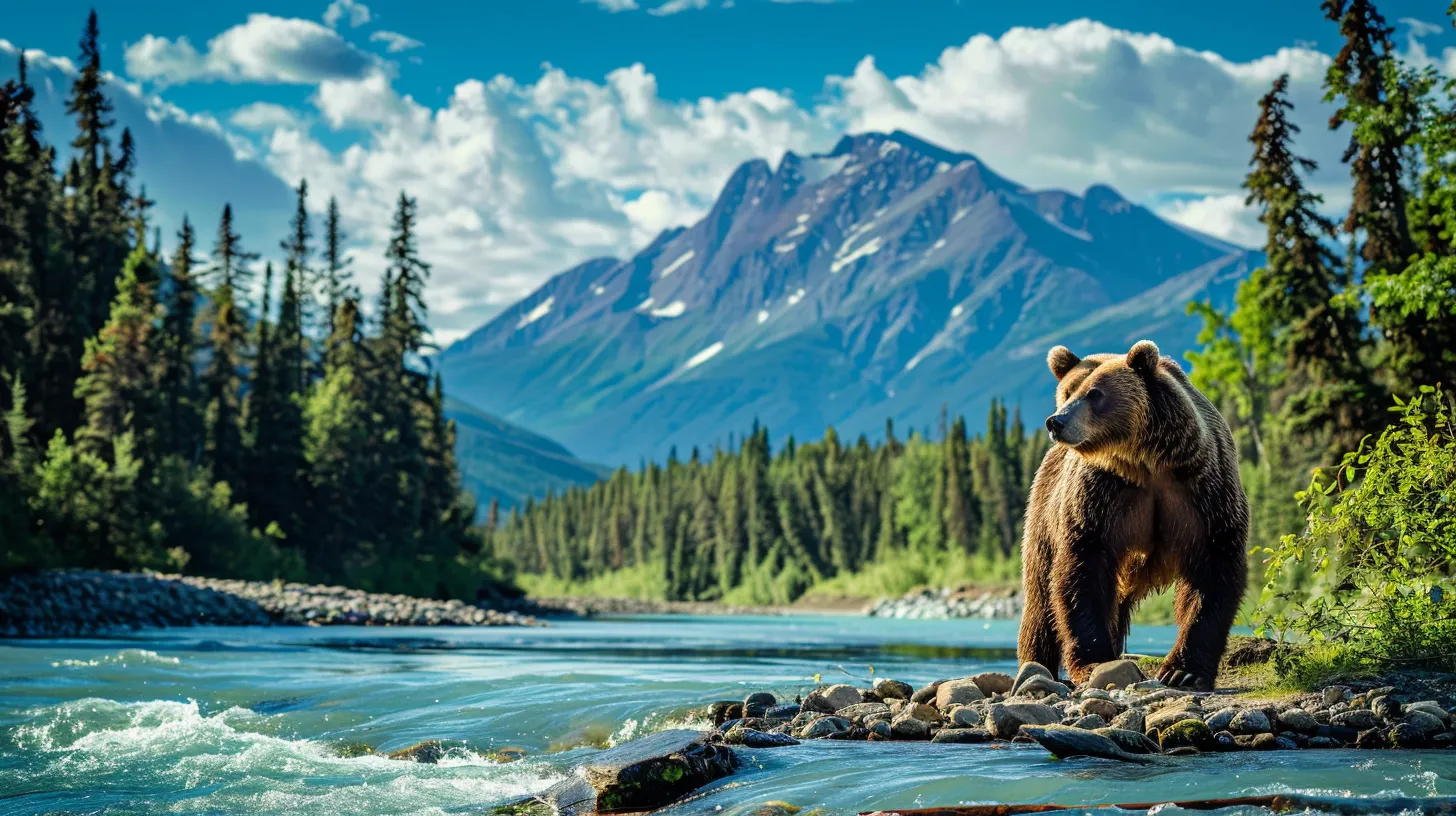
The summer season presents exceptional opportunities for observing various bear species in Alaska, particularly during the salmon runs, which significantly influence bear activity. Prime locations such as Lake Clark National Park and Preserve and the Alaska Zoo offer excellent vantage points for viewing grizzlies. Recommended bear viewing tours and guides enhance experiences, while ample preparation for summer wildlife encounters ensures memorable adventures amid Alaska’s stunning landscape.
The Impact of Salmon Runs on Bear Activity
The salmon runs in summer serve as a significant catalyst for bear activity, particularly for species like the Kodiak bear. As these fish migrate upstream to spawn, they become a vital food source, drawing bears to rivers and streams in large numbers. Observing this behavior can be a highlight for wildlife enthusiasts, especially for those equipped with quality binoculars or on a yacht tour, allowing for close, unobtrusive views of these majestic creatures as they feast on the abundant salmon.
- Salmon runs attract bears to rivers and streams.
- Kodiak bears are particularly active during this time.
- Binoculars enhance wildlife viewing experiences.
- Yacht tours provide unique perspectives on bear activity.
- Observing bears feeding offers memorable wildlife encounters.
Best Places to See Grizzlies During Summer
For those seeking to observe grizzlies during the summer, several locations in Alaska stand out as prime viewing spots. In areas such as Icy Strait, visitors often witness bears actively fishing for salmon during their increasing activity after hibernation. Additionally, the Yukon region provides scenic landscapes where these magnificent animals can be seen foraging as they prepare for the upcoming winter, ensuring an unforgettable wildlife experience. The combination of snow-capped mountains and lush vegetation enhances the backdrop for such encounters, making these destinations particularly appealing for nature enthusiasts.
Recommended Bear Viewing Tours and Guides
Planning a bear viewing tour in Alaska’s summer season can greatly enhance the wildlife experience. Options like guided excursions from Denali to Glacier Bay National Park and Preserve provide excellent opportunities to observe bears in their natural habitat. Many tour operators offer comprehensive packages that cover transportation along the coast, knowledgeable guides, and even the option to receive additional information through an email address, ensuring travelers maximize their encounters with Alaska’s majestic wildlife.
Preparing for Summer Wildlife Encounters
Preparing for wildlife encounters during the summer season in Alaska requires careful planning and proper equipment. Travelers should consider utilizing the Alaska Railroad for a scenic journey through pristine wilderness, offering access to locations where bears are frequently sighted. Additionally, sailing trips around Kodiak Island provide excellent opportunities for observing not only bears but also deer and a variety of marine wildlife, enriching the overall experience.
Summer fades, and with it, the bears prepare for their next phase. In the fall, opportunities arise to witness these creatures in a different light, as they search for sustenance and ready themselves for winter.
Fall Season: Late-Season Bear Viewing
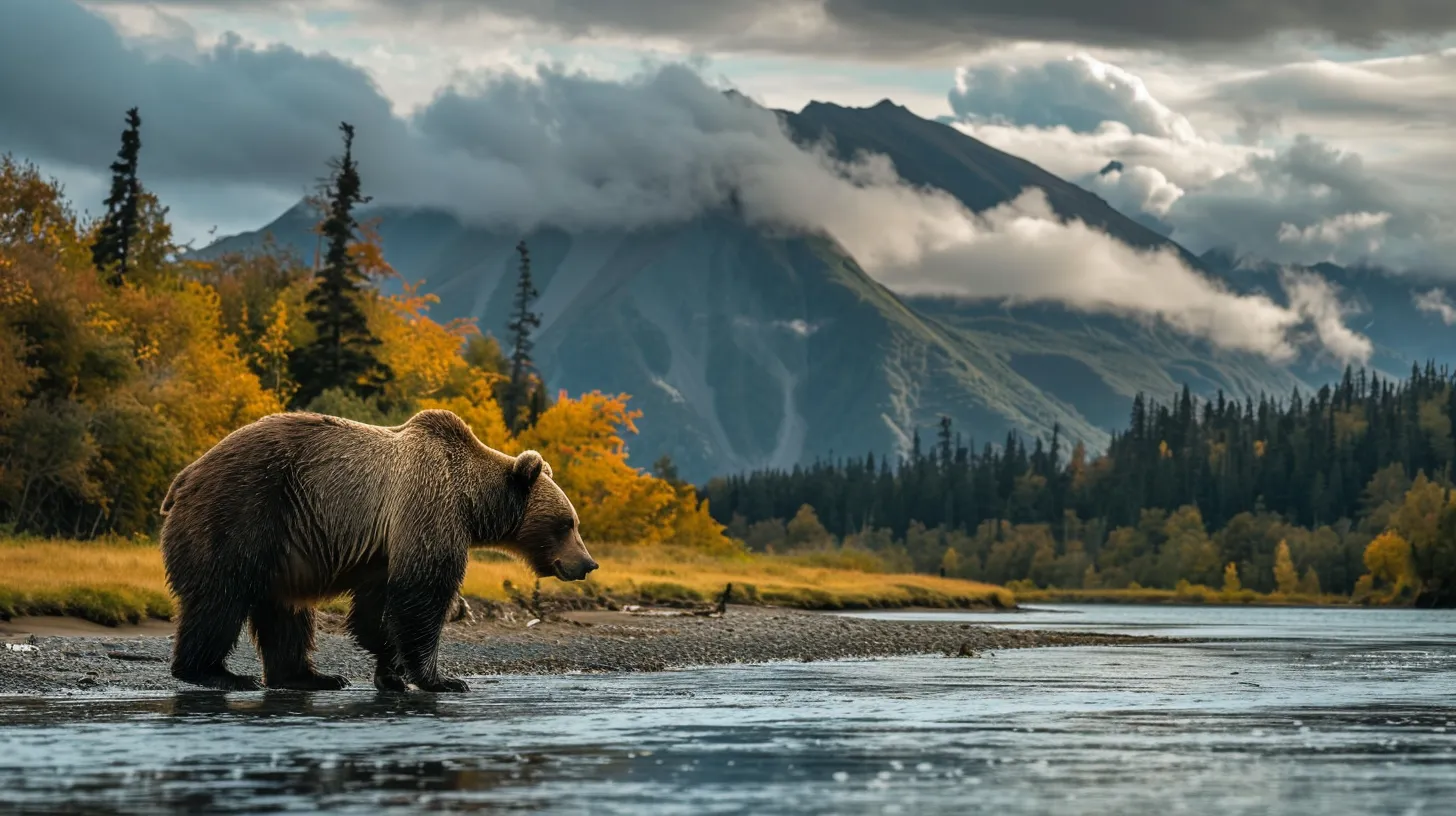
As winter approaches, bear behavior changes significantly, making fall an intriguing time for wildlife enthusiasts. Key locations for sightings include Kenai Fjords National Park and the McNeil River. For photography, selecting the right camera lens and following the best trails is essential. Additionally, understanding safety precautions while observing bears ensures a responsible and enjoyable experience during this captivating season.
Changes in Bear Behavior as Winter Approaches
As winter nears, bears in Alaska exhibit notable changes in behavior, primarily driven by the need to build fat reserves before hibernation. During the fall season, they focus on foraging for berries and salmon, optimizing their intake to prepare for the colder months. Travelers can enhance their chances of observing these vital feeding behaviors via cruise ship tours or seaplane trips to remote locations, as bears become increasingly visible while searching for food. Such excursions provide a fantastic opportunity for wildlife enthusiasts to witness this crucial time in the bears’ annual cycle, ensuring a rewarding viewing experience.
Notable Locations for Fall Bear Sightings
Notable locations for bear sightings during the fall season in Alaska include Kenai Fjords National Park and the McNeil River, where increased bear activity can be observed as these majestic creatures forage for salmon and berries. These areas provide excellent vantage points for photographers and wildlife enthusiasts, as they enhance the chance of capturing stunning images of bears preparing for hibernation. Timing one’s visit to coincide with the bears’ foraging habits ensures a rewarding experience in witnessing these animals in their natural habitat, ultimately enriching the wildlife viewing adventure.
Photography Tips for Capturing Bears in Autumn
To capture stunning photographs of bears during the autumn season in Alaska, photographers should focus on utilizing natural lighting conditions. Morning and late afternoon light provides a warm glow that enhances the rich colors of the landscape and the bears’ fur. It’s essential to maintain a safe distance while using a telephoto lens to ensure clear images without disturbing the bears, particularly as they forage for food. Awareness of the bears’ behavior and movements allows photographers to anticipate opportunities for engaging shots, ensuring a successful experience in these breathtaking settings.
Safety Precautions When Looking for Bears in Fall
When seeking bears during the fall season in Alaska, travelers must prioritize safety to ensure a responsible experience. Maintaining a safe distance is crucial, as bears can be unpredictable, especially when foraging for food. It is advisable for observers to remain in groups and follow guided tours conducted by experts, who can provide valuable insight into bear behavior and ensure that safety protocols are adhered to during wildlife encounters.
The leaves fall, but the bears prepare for their return. In spring, as the earth awakens, these creatures emerge, ready to reclaim their land.
Spring Season: Emerging Bears
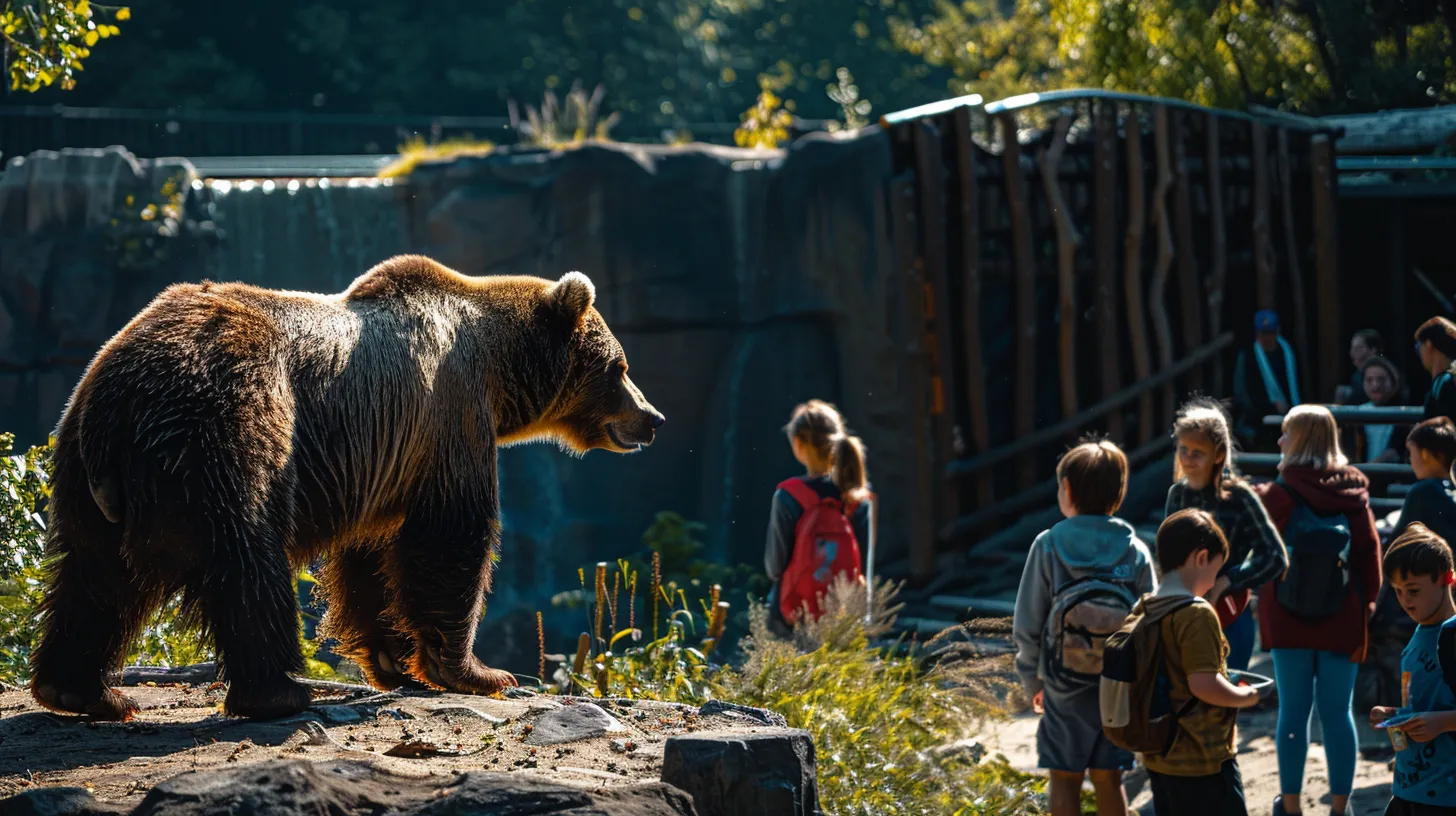
During spring, travelers can witness remarkable changes as bears awaken from hibernation, showcasing their natural behavior and feeding habits. Optimal locations for viewing these emerging bears include coastal regions and parks like Katmai. Eco-tours focusing on early season sightings provide valuable insights into wildlife behavior, enhancing the experience for enthusiasts eager to learn more about these majestic creatures.
What to Expect During Bear Awakening From Hibernation
During spring, bear awakening from hibernation provides an exceptional opportunity for wildlife enthusiasts to observe these magnificent animals in their natural habitat. As temperatures rise, bears emerge from their dens, noticeably active as they search for food after months of fasting. Regions like Katmai National Park become prime locations for witnessing this behavior, with visitors often seeing bears foraging in coastal areas and rivers, signaling the onset of a thrilling wildlife experience in Alaska.
Optimal Spots for Viewing Bears in Spring
During spring, prime locations for bear viewing in Alaska include Katmai National Park and the coastal areas of Kodiak Island. At Katmai, enthusiasts can observe bears emerging from their dens and actively foraging along riverbanks and beaches, particularly around late April through May. Kodiak Island offers similar opportunities, where the combination of rich marine ecosystems and abundant food sources attracts brown bears looking to replenish after hibernation, ensuring an engaging experience for wildlife photographers and nature lovers alike.
Eco-Tours Focused on Early Season Bear Sightings
Eco-tours that focus on early season bear sightings offer an informative and engaging way for visitors to witness bears emerging from hibernation in Alaska. These guided tours provide opportunities for travelers to observe bear behavior while learning about their habitats and conservation efforts. Participants benefit from the expertise of knowledgeable guides, who can enhance safety and understanding during encounters with these magnificent animals, making such tours an excellent choice for wildlife enthusiasts looking for memorable experiences.
Wildlife Behavior Education for Enthusiasts
Wildlife behavior education is vital for enthusiasts looking to enhance their experience while observing bears in Alaska during spring. Understanding the changes in bear behavior as they emerge from hibernation can significantly improve viewing success. Knowledgeable guides and eco-tours offer insights into how bears forage for food and interact in their habitats, providing practical tips for respectful observation and photography opportunities.
The warmth of summer brings life to the woods, yet whispers of winter’s quiet return linger on the breeze. With the changing season comes the promise of rare bear sightings, where patience and stillness reward the keen observer.
Winter Season: Rare Bear Sightings
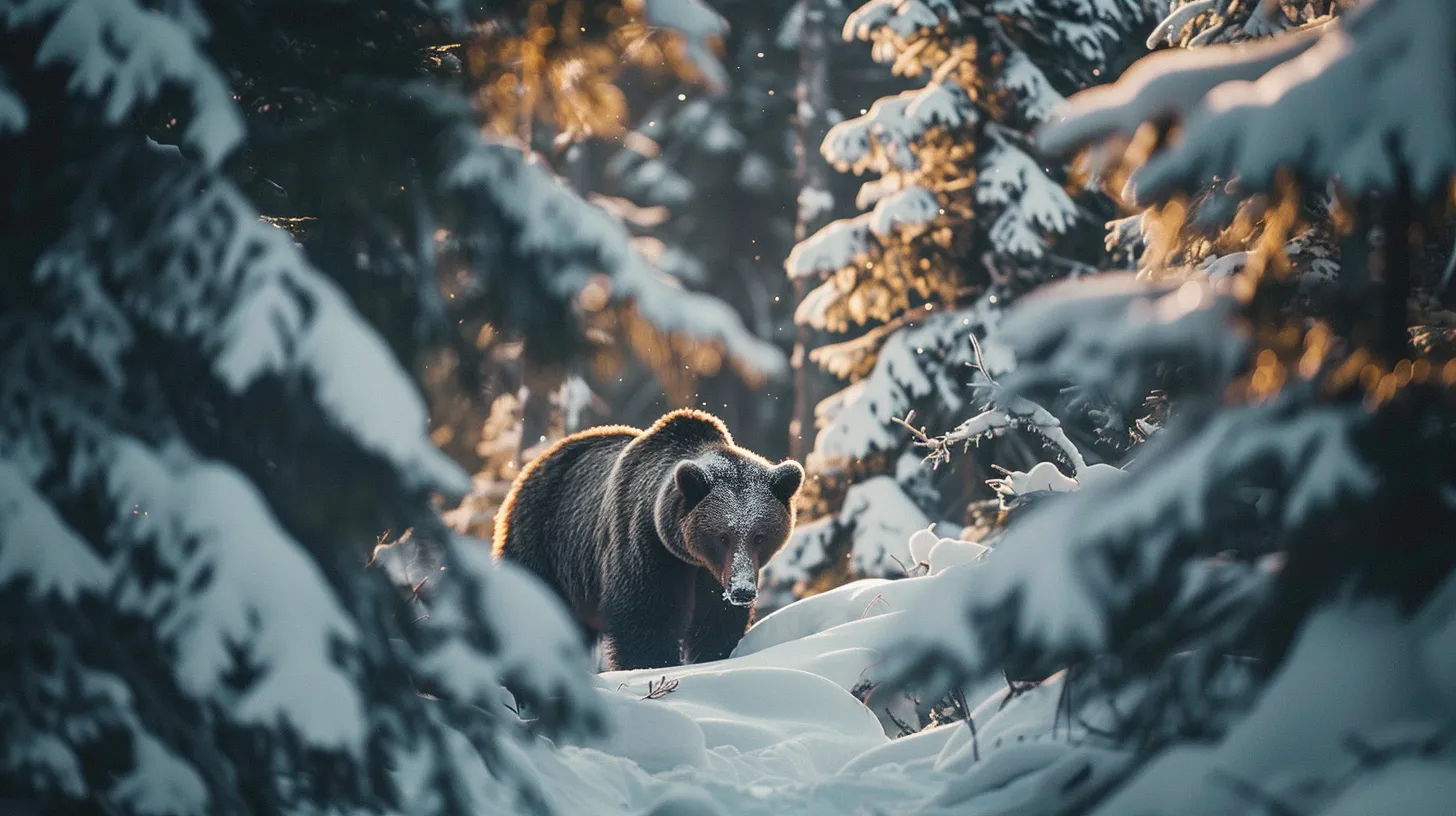
Winter presents a unique opportunity for bear enthusiasts to witness the rare sightings of these majestic creatures amidst snow-covered landscapes. Though bears are primarily dormant, understanding their dormant lives and the effects of winter conditions can enhance the viewing experience. Key locations offer chances to spot bears in their natural winter habitats, while safety and preparation for cold weather are vital for successful outings. This section explores the interplay between winter conditions and bear behavior, ideal viewing locations, and essential preparation tips for observing bears during this quiet season.
Unique Winter Conditions and Their Effects on Bears
Winter conditions significantly affect bear behavior in Alaska, as most bear species enter a state of hibernation during this season. The presence of snow and cold temperatures prompts these animals to conserve energy by seeking shelter in dens, making sightings quite rare. However, in areas with milder winter climates, such as Kodiak Island, it is still possible for enthusiasts to observe bears that remain active in search of food, thereby offering a compelling opportunity for wildlife viewers willing to brave the chilly conditions.
Locations With Opportunities for Viewing Bears in Snow
For those interested in rare bear sightings during winter, certain locations in Alaska provide unique opportunities to observe these animals in snow-covered landscapes. Kodiak Island stands out as a prime area, where the milder climate allows some bears to remain active in search of food. Additionally, the Kenai Peninsula can offer glimpses of bears that venture out during warmer spells, making it an appealing destination for winter wildlife enthusiasts seeking to capture the beauty of bears amidst the serene backdrop of snow.
Safety and Preparation for Cold Weather Viewing
When planning a bear viewing adventure in Alaska during winter, individuals must prioritize safety and be adequately prepared for cold weather conditions. Dressing in layers is essential, utilizing thermal clothing to maintain warmth in frigid temperatures, while sturdy boots provide support and traction on potentially icy surfaces. Additionally, bringing binoculars can enhance the viewing experience by allowing for close observation of bears in their natural habitats without disturbing them. Understanding the behaviors of bears during winter, such as their tendency to seek shelter, can also help in selecting appropriate locations for sightings, ensuring a rewarding and safe wildlife experience.
Insights Into the Dormant Lives of Bears
Bears in Alaska enter a state of hibernation during the winter season, significantly impacting their visibility. Understanding their dormant lives provides valuable insights for wildlife enthusiasts looking to spot these majestic animals. While most bears sleep in dens to conserve energy, areas with milder climates, such as Kodiak Island, may offer chances to observe bears that remain active in search of food. This knowledge allows travelers to better plan their trips, increasing the likelihood of witnessing rare bear sightings even in the colder months.
With winter’s chill still in the air, the allure of Alaska’s bears draws closer. Planning a bear viewing trip offers the chance to witness these majestic creatures in their summer habitat.
Planning Your Alaska Bear Viewing Experience
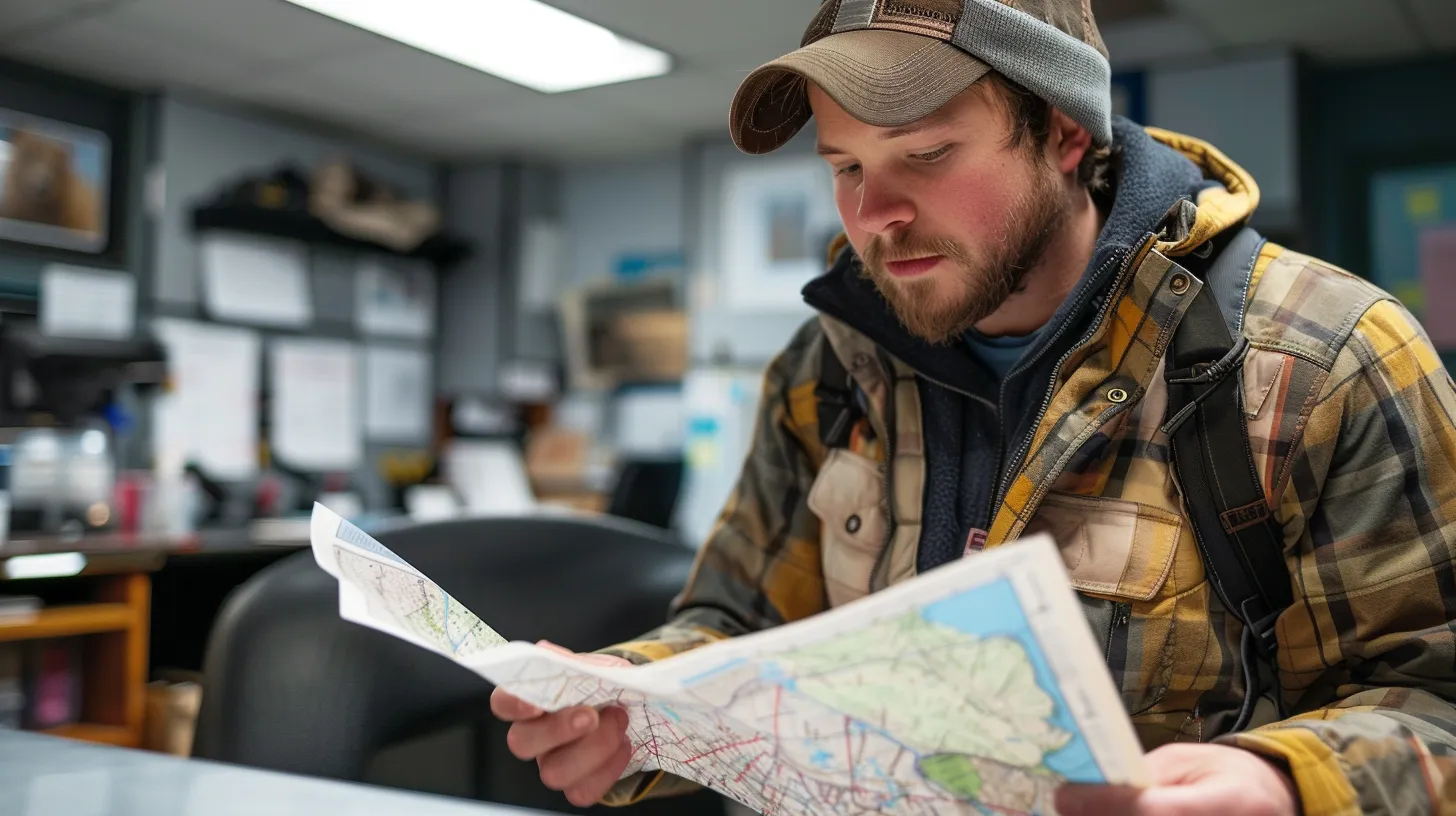
Travelers planning an Alaska bear viewing experience should consider several essential factors to ensure successful encounters. Understanding seasonal travel nuances, packing appropriate gear, and identifying the best times of day for bear sightings can significantly enhance the adventure. Furthermore, adhering to etiquette and best practices for ethical viewing will contribute to a respectful wildlife experience, enriching the journey for both visitors and bears.
Essential Considerations for Seasonal Travel
When planning a bear viewing experience in Alaska, travelers should consider seasonal variations that significantly impact bear activity and accessibility. Each season presents distinct opportunities, making it vital for visitors to research specific months when bears are most active. For example, scheduling trips during the salmon runs in late summer enhances the likelihood of witnessing brown bears fishing, while spring offers unique chances to observe polar bears emerging from dens. Understanding these seasonal nuances can lead to more rewarding wildlife encounters.
What to Pack for Optimal Bear Viewing Adventures
When preparing for bear viewing adventures in Alaska, packing the right gear significantly enhances the experience. Essential items include durable hiking boots for navigating rugged terrains, layered clothing to adapt to varying weather conditions, and binoculars for clear observation of bears without disturbing their natural behavior. A quality camera, along with a telephoto lens, allows for capturing great photographs of these majestic creatures, ensuring that all visitors have the best chance to create lasting memories while witnessing Alaska’s incredible wildlife.
Best Times of Day for Viewing Bears
The best times of day for viewing bears in Alaska typically occur in the early morning and late afternoon. During these periods, bears are often more active as they forage for food, taking advantage of the cooler temperatures and increased privacy from human activity. Wildlife enthusiasts seeking to maximize their chances of witnessing these magnificent creatures should plan outings around these prime hours, as this approach significantly enhances opportunities for memorable encounters and stunning photography.
Etiquette and Best Practices for Ethical Viewing
When observing bears in Alaska, following ethical viewing practices is paramount to ensure both the safety of wildlife and a positive experience for visitors. Maintaining a respectful distance from bears is essential; approaching too closely can disrupt their natural behavior and pose risks to both parties. It is advisable for enthusiasts to follow guidelines set by wildlife agencies, as these principles not only protect the bears but also enhance the likelihood of successful sightings during key viewing seasons.
Conclusion
Understanding the optimal seasons for viewing bears in Alaska is vital for wildlife enthusiasts seeking unforgettable encounters. Spring, summer, fall, and even winter each offer unique opportunities to observe different bear species in their natural habitats. Planning trips during key months maximizes chances of witnessing thrilling behaviors, such as brown bears fishing during salmon runs or polar bears emerging from dens. By respecting bear habitats and adhering to ethical viewing practices, travelers can ensure both memorable experiences and the protection of these magnificent animals.

